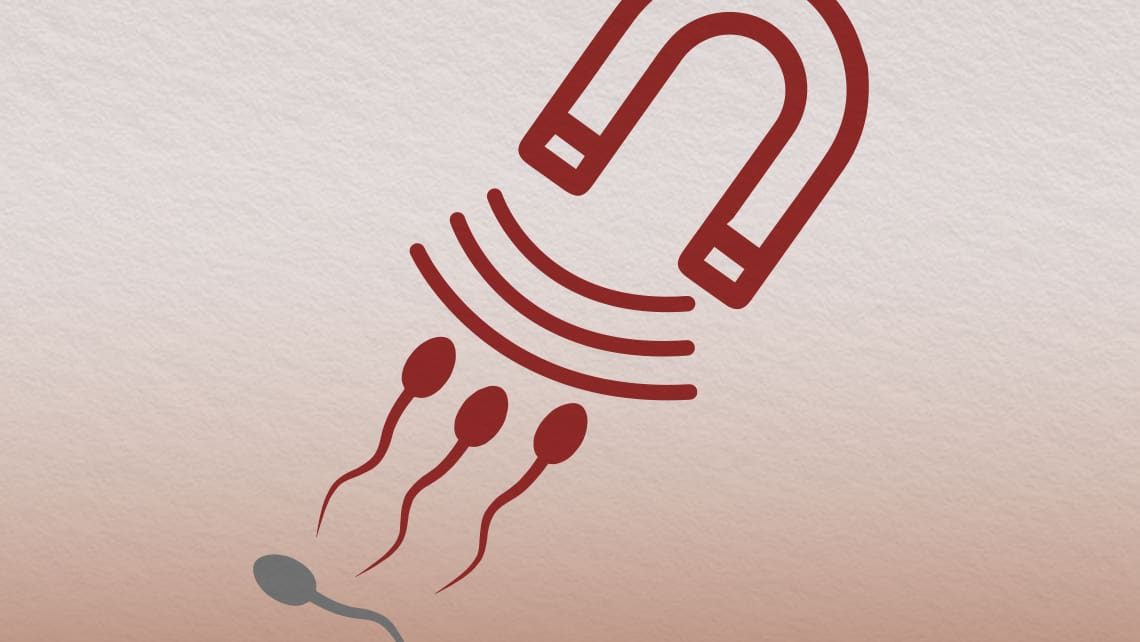
MACS (Magnetic Activated Cell Sorting) is an immunomagnetic technique allowing the selection of those spermatozoa that do not show signs of cell damage or death (called apoptosis), and therefore maintain their entire DNA intact.
Seminal quality is a crucial factor when it comes to achieving a pregnancy, since it affects both fertilization and subsequent embryo quality. There are different factors that affect semen quality and one of them is the presence of apoptotic sperm. These damaged sperm can be removed from the sample using this technique because their membranes contain markers that can be detected, thus obtaining a fraction that is free of them and, therefore, better quality.
How does it work?
This method allows us to separate apoptotic sperm (which is programmed for cell death) from the non-apoptotic and viable. The principle on which these columns are based is that apoptotic sperm expresses phosphatidylserine in the outer membrane, and this has an affinity for a protein called annexin.
We incubate the selected sperm with annexin coated with magnetic micro-particles and make it pass through a column where a magnetic field has been applied. The apoptotic sperm will be retained in the column, while the non-apoptotic will be passed through it without being retained. This non-apoptotic sperm fraction is the one that is used in assisted reproduction treatments, increases fertilization capacity of the sperm, and allows to achieve a higher gestation rate, approximately between 10 and 15%.
This technology can be applied to any type of patient – mainly to infertility patients with high DNA fragmentation in their sperm, patients with repeated miscarriages without other identified causes. Also, patients with at least one previous cycle or with poor embryo quality which is not due to the oocytes.
Is it right for me?
This technique can be used with any kind of patient, but is mainly used with:
– Patients going through an artificial insemination treatment.
– Patients who have a high level of DNA fragmentation in their sperm sample.
– Patients who have had repeated miscarriages with an unidentified cause.
– Patients who have had at least one previous treatment cycle or who have poor embryo quality which is not attributable to the eggs.
Contact Us
If you have any questions or need help, feel free to contact us for medical assistance.
